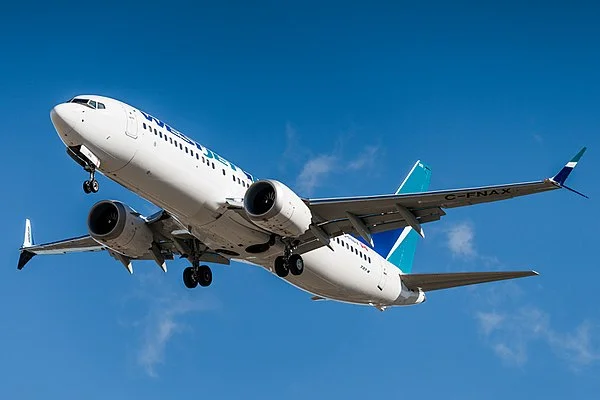
N.E. responds to COVID-19: A testing site for uninsured; policy-change simulator; in-state tuition for out-of staters
The First Congregation Church in Boston’s Hyde Park neighborhood, whose unofficial motto is “A Small Town in the City.’’ A mobile COVID-19 testing site has been opened there for the uninsured.
From The New England Council (newenglandcouncil.com)
BOSTON
As our region and our nation continue to grapple with the Coronavirus Disease (COVID-19) pandemic, The New England Council is using our blog as a platform to highlight some of the incredible work our members have undertaken to respond to the outbreak. Each day, we’ll post a round-up of updates on some of the initiatives underway among Council members throughout the region. We are also sharing these updates via our social media, and encourage our members to share with us any information on their efforts so that we can be sure to include them in these daily roundups.
You can find all the Council’s information and resources related to the crisis in the special COVID-19 section of our Web site. This includes our COVID-19 Virtual Events Calendar, which provides information on upcoming COVID-19 Congressional town halls and webinars presented by NEC members, as well as our newly-released Federal Agency COVID-19 Guidance for Businesses page.
Here is the April 27 roundup
Medical Response
Brigham and Women’s Hospital Opens Mobile Testing Site for Uninsured – In Hyde Park—one of Boston’s emerging virus hotspots—Brigham and Women’s Hospital has opened a mobile testing site to serve those with coronavirus symptoms but without health insurance. Testing at the site will be free of charge, and providers will not ask patients about immigration status. The testing site will also provide masks, boxes of food, and educational materials for those who qualify. Read more from CBS Boston.
Massachusetts General Hospital Researchers Develop Simulator to Predict Policy Change Effects – As states weigh when and how to begin re-opening nonessential businesses, Massachusetts General Hospital (MGH) has built a COVID-19 simulator to predict infections, hospitalizations, and deaths from coronavirus in the state under different plans of action. The model uses virus data to create statistical predictions of the its spread to inform state and local leaders on when it will be safe to ease physical distancing regulations. WBUR has more.
Economic/Business Continuity Response
The University of Maine Offers Tuition Break for Students Affected by Coronavirus – To support students across the country facing educational uncertainty, the University of Maine (UMaine) has launched a new initiative, The Maine Welcome, to allow all students—regardless of state origin—to pay in-state tuition to continue their studies. The program aims to help students as they navigate potential school closures and revenue losses. More from Mainebiz
PwC Makes Digital Fitness App Free Worldwide – To allow workers across sectors and around the world to develop digital skills, PricewaterhouseCoopers (PwC) has made its technological training app free globally. The app offers courses and learning assessments to instruct workers to learn important skills in a workforce increasingly dependent on technology. Cyprus Mail has more.
Community Response
AAA Northeast Uses Service Fleet to Deliver Protective Gear – In partnership with a West Haven, Conn., manufacturer, AAA Northeast is utilizing its fleet of service vehicles, deemed essential, to deliver gowns and other protective equipment made by Thermaxx to first responders and Connecticut state agencies. Read more in WTNH.
Harvard Pilgrim Health Care Enters Partnership to Provide Meals to Families – Harvard Pilgrim Health Care has donated $52,000 to sponsor a month of free meals for families through the Dimock Center. The Dimock Center will provide meals twice a week for families for one month using the donation, but Harvard Pilgrim has committed to additional funding as needed. The Jamaica Plain Gazette has more.
Boeing Transports 1.5 Million Masks to Aid Response – Continuing its relief missions around the world, Boeing delivered 1.5 million face masks from Hong Kong to the United States. The protective equipment will be used by healthcare providers across the country to combat shortages of the equipment necessary to keep healthcare workers safe. Read the release here.
Stay tuned for more updates each day, and follow us on Twitter for more frequent updates on how Council members are contributing to the response to this global health crisis.
Llewellyn King: Don't let autonomous-transport developers rush to market
A WestJet Boeing 737 MAX 8 on final approach. The model is now grounded.
A shadow has fallen across the future of autonomous transportation, one of the key aspects of the city of the future and of the widespread use of artificial intelligence. It comes from Boeing in the form of the computer problem that has grounded the world’s fleet of 737 Max 8 aircraft.
No definitive cause of the crashes of Lion Air Flight 610, in the Java Sea, which killed 189 people, and Ethiopian Airlines Flight 302, en route from Nairobi to Addis Ababa, which killed 157 people, has been established yet. But the everything points to the computerized stall-avoidance system.
In terms of computing in aircraft, this is no more than an embarrassment. In terms of loss of life, it is ghastly. In terms of the public confidence in the growing role of computing in everything, it is grave.
These crashes have stimulated public fear, and public fear hangs around. So does institutional fear -- even when the problem has been identified and remediated.
Consider these events, which have left a long-lasting residue of fear:
Thalidomide was a drug developed in Germany and first marketed there to pregnant women as an anti-depressant.. Use spread around the globe and the results were devastating: More than 10,000 babies were born without one or two major limbs, like arms and legs.
I am told, although it is never mentioned, thalidomide haunts the drug industry. It has affected both the development of new drugs and the regulation of drugs to this day. The long delays and exhausting trials new drugs go through are partly due to something that happened in the late 1950s.
The Three Mile Island nuclear-power plant accident, in Pennsylvania in 1979, has affected nuclear design and regulation of nuclear plants ever since, although no life was lost. There was a partial meltdown of the core and the result fed the anti-nuclear movement which, ironically, pushed utilities back to coal -- now under attack because of its environmental impact.
The Max 8 problem, in terms of computing in aircraft, is no more than a glitch, possibly the result of a rush to market. But the loss of life is terrible and the loss of confidence immeasurable.
A whole array of high-tech companies is hoping to bring autonomous transportation to the streets within a decade or not much longer. These include Uber, Lyft and Google. Tesla would like to see autonomous electric trucks handling intercity deliveries.
This push to the driverless has huge energy and resources behind it. It is a part of what has come to be known as the smart city revolution. It also is part of what has been described as the Fourth Industrial Revolution.
Early autonomous cars have depended on sensors to guide them. The car in front slows and the car behind picks this up from its sensors. When autonomous vehicles are fully developed, these cars and all the others on the road will be in constant communication with each other. Car A will tell Car B, “I am breaking” and so on down through a line of traffic. It is coming.
The message from Boeing’s catastrophe is: Get it right or you will scare the public off, as happened with Three Mile Island. Some willing propagandists scared the public off nuclear — our best way of making a lot of electricity without carbon.
The technology in aircraft is very sophisticated. Almost all passenger airliners have been able to land themselves once they intercept a radio signal, called the glide slope, at an advanced airport. They are packed full of computers operating all sorts of wondrous systems.
If all the computers on the fatal Max 8s had been talking to each other, as traffic will have to in the coming era of autonomous vehicles, they might well have shut down the stall avoidance system that was mis-sensing an imminent stall.
The neo-Luddites will try to exploit the Boeing catastrophe into slowing smart city development. The challenge for autonomous technology is to get it right. Not rush to market.
Llewellyn King is executive producer and host of White House Chronicle, on PBS. His email is llewellynking1@gmail.com and he’s based in Rhode Island and Washington, D.C.
Boeing and MIT announce Kendall Square project
At Kendall Square, in Cambridge.
From the New England Council (newenglandcouincil.com)
"Boeing Co. and the Massachusetts Institute of Technology (MIT) recently announced plans to open a new Boeing Aerospace & Autonomy Center in Cambridge’s Kendall Square neighborhood, making Boeing the first tenant of MIT’s long-planned Kendall Square Initiative. Under the new agreement, Boeing Co. will occupy about one-third of the 343,000-square-foot office building which will house the company’s recenlty-purchased subsidiary, Aurora Flight Sciences, a Virginia-based company that specializes in the design and construction of advanced unmanned systems and aerospace vehicles. The new center will focus on designing, building, and flying autonomous aircraft and developing enabling technologies.
The agreement builds on a century-long research relationship that Boeing and MIT established with the overarching goal of advancing aerospace innovation. Earlier this year, the company announced that it will serve as lead donor for a new $18 million wind tunnel on campus.
MIT Provost Martin Schmidt said, “It’s fitting that Boeing will join the Kendall/MIT innovation family. Our research interests have been intertwined for over 100 years, and we’ve worked together to advance world-changing aerospace technologies and systems. MIT’s Department of Aeronautics and Astronautics is the oldest program of its kind in the United States, and excels at its mission of developing new air transportation concepts, autonomous systems, and small satellites through an intensive focus on cutting-edge education and research. Boeing’s presence will create an unprecedented opportunity for new synergies in this industry.”
David Warsh: Of plane crashes and hyper-computerization
BOSTON
David Warsh, a longtime financial journalist and an economic historian, is principal of



